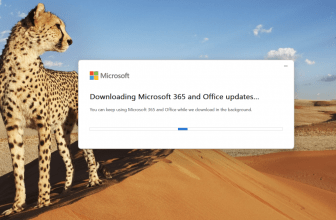As we enter 2025, the cybersecurity landscape is evolving rapidly, shaped by technological advancements, changing work environments, and an increasingly complex threat landscape. The past few years have seen a dramatic increase in cyber threats, with organizations of all sizes facing sophisticated attacks that exploit vulnerabilities in both technology and human behavior. With the rise of remote work, the proliferation of Internet of Things (IoT) devices, and the growing reliance on cloud services, businesses are navigating a new reality where traditional security measures may no longer suffice.
In this dynamic environment, understanding the future of cybersecurity is crucial for organizations aiming to protect their sensitive data and maintain operational integrity. As we look ahead, several key trends and predictions are emerging that will define the cybersecurity landscape in 2025. From the increasing use of artificial intelligence by both attackers and defenders to the pressing need for robust security frameworks like zero trust architecture, these predictions highlight the critical areas that organizations must focus on to stay ahead of evolving threats.
In this article, we will explore the top ten cybersecurity predictions for 2025, providing insights into how these trends will shape security strategies and what businesses can do to prepare for the challenges ahead. By staying informed about these developments, organizations can better equip themselves to navigate the complexities of modern cybersecurity and safeguard their assets against potential threats.
1. AI-Powered Cyber Attacks
Threat actors will increasingly leverage artificial intelligence (AI) to enhance their attack strategies. This includes using AI for sophisticated phishing attempts, social engineering, and even creating deepfakes for identity theft and fraud. The rise of generative AI will enable attackers to craft highly convincing narratives that can deceive even the most vigilant users.
2. Rise of Ransomware and Multifaceted Extortion
Ransomware will continue to be a dominant threat, evolving into more complex forms of multifaceted extortion. Attackers may not only encrypt data but also threaten to leak sensitive information unless their demands are met. This trend will impact various sectors, particularly those with critical infrastructure vulnerabilities.
3. Increased Focus on Zero Trust Architecture
Organizations will increasingly adopt zero trust security models, which require strict verification for every user and device attempting to access resources within a network. This approach reduces the risk of internal breaches and enhances overall security posture against external threats.
4. Exploitation of Open Source Software Vulnerabilities
Cybercriminals will target open source ecosystems, exploiting vulnerabilities in code dependencies to disrupt organizations. As reliance on open source software grows, so does the need for robust security measures in these environments.
5. The Big Four: State-Sponsored Threats
Nation-state actors from Russia, China, Iran, and North Korea will remain active in cyber espionage and disinformation campaigns. These countries are expected to align their cyber operations with geopolitical objectives, posing significant threats to national security and corporate interests alike.
6. Cyber Crime-as-a-Service (CaaS)
The proliferation of cyber crime-as-a-service platforms will lower barriers for less-skilled actors to conduct sophisticated attacks. Automated hacking tools will become widely available on dark web marketplaces, enabling a new wave of cybercrime that can be executed with minimal technical expertise.
7. Shadow AI Risks
Unmonitored AI tools within organizations—often referred to as “shadow AI”—will introduce hidden vulnerabilities. These tools may operate without oversight or integration into formal security protocols, creating significant risks for data security and compliance.
8. Home Network Vulnerabilities
As remote work persists, attackers will exploit vulnerabilities in employees’ home networks. Many home routers and connected devices are often inadequately secured, providing an easy entry point for cybercriminals targeting corporate networks.
9. Quantum Computing Threats
The potential rise of quantum computing poses a future threat to encryption methods currently in use. Attackers may stockpile encrypted data today with plans to decrypt it once quantum computing becomes more accessible, necessitating a shift towards quantum-resistant cryptography.
10. AI-Driven Defense Mechanisms
On the defensive side, organizations will increasingly rely on AI-powered detection systems to identify and respond to threats autonomously. This shift towards automation in cybersecurity operations aims to enhance response times and reduce the burden on human analysts.
Conclusion
As we navigate through 2025, organizations must stay vigilant and proactive in adapting their cybersecurity strategies to address these emerging threats. By understanding these predictions, businesses can better prepare themselves against the evolving landscape of cyber risks and protect their critical assets effectively.






